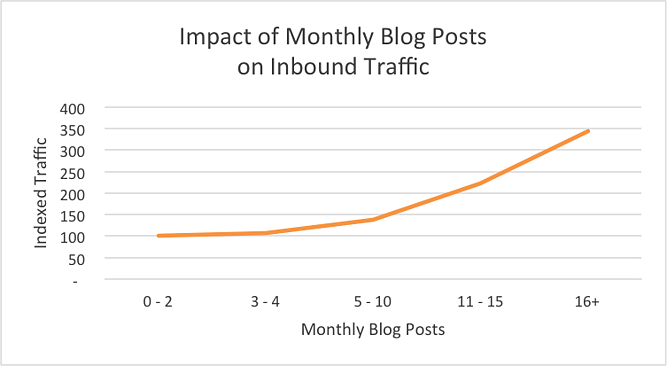News organisations and their journalists have been competing for consumers’ eyes and ears for hundreds of years. While the media industry has been turned on its head in the last 20 or so years, many of the principles that underpin competitive journalism have remained unchanged.
Understanding these principles and applying them to your brand’s content strategy will dramatically improve the efficiency and effectiveness of your content.
The concept of a ‘brand newsroom’ is not new. However, unless your newsroom lives and breathes traditional newsroom values it is merely a content production studio. Here are five principles you can apply to your content strategy.
1. Deadline Discipline
While the news cycle for daily and weekly newspapers have changed significantly since the proliferation of online news sites and a digital-first approach, the tyranny of deadlines remains.
Regardless of whether you are the newest cadet at your local weekly paper or a senior columnist at the biggest paper in the country – your day is ruled by deadlines. Some are hourly, some are daily, some are weekly (Saturday editions) and some monthly (liftouts).
Newspaper deadlines are immovable, intractable and policed by irascible editors.
The best content, like news, is fresh. A piece of content that’s not timely can quickly become irrelevant. Building a culture of deadline discipline to your brand newsroom will greatly improve the consistency and timeliness of your outputs.
2. Understand Your Audience
Newsrooms have got creating quality content en masse down to a fine art because it’s their raison d’être. They know that to really get people reading, their content needs to be audience-centric.
A few years ago the Financial Times launched a new digital data dashboard to help journalists and editors in the newsroom better understand their audience and how people interact with stories on the website.
The tool, called Lantern, integrates audience data collected across the entire organisation, which already exists but usually serves business or commercial purposes.
Using Lantern, anyone in the newsroom will be able to find out how their story is doing in real time, but also how the audience engages with it in the longer term.
While developing custom monitoring software is beyond most brands, building a system to monitor traffic, engagement and feedback is critical to understanding your audience and constantly evolving your content to reflect the needs of your audience.
3. Employee Journalists
With so many of the skills and disciplines required to develop highly engaging content learnt in the newsroom, it is little wonder journalists often make the best content producers. Only journalists who have spent a considerable amount of time in a newsroom understand the agility and flexibility required to produce great content on a consistent basis under tight timelines.
Journalists also have specific training in writing great headlines, undertaking thorough research, prioritising accuracy, separating content from fluff, building relationships, writing in news style and understanding complex issues quickly. All of these are invaluable to a brand newsroom.
READ MORE:
4. Apply News Values
Journalists commonly use six values to determine how newsworthy a story or elements of a story are. Knowing the news values can help a journalist make many decisions, including:
– What information to give first in a news article, and in the lede (the lead paragraph)
– Which articles to display on a newspaper’s front page
– What questions to ask in an interview
The six news values are:
- Timeliness- Recent events have a higher news value than less recent ones.
- Proximity- Stories taking place in one’s hometown or community are more newsworthy than those taking place far away.
- Prominence- Famous people and those in the public eye have a higher news value than ordinary citizens.
- Uniqueness/oddity- A story with a bizarre twist or strange occurrences. “Man bites dog” instead of “dog bites man.”
- Impact- Stories that impact a large number of people may be more newsworthy than those impacting a smaller number of people.
- Conflict- “If it bleeds, it leads.” Stories with strife, whether it’s actual violence or not, are more interesting.
The newsworthiness of a story is determined by a balance of these six values. There is no set formula to decide how newsworthy a story is, but in general, the more of these six values a story meets, the more newsworthy it is.
Curate
Not every piece of content needs to win a Pulitzer. Volume counts. Recent research by HubSpot found a clear and direct correlation between the number of monthly blog posts and inbound traffic.
Sometimes your job is simply to act as a gatekeeper and curator of other people’s content. Too many brand newsrooms put too much emphasis on creating ‘original’ content.
Sometimes finding and reconextualising a third-party’s content is just as valuable to toy your audience, but infinitely less time consuming and onerous.
For most brands, relying on the product alone is not enough to sustain the ongoing volume required to build and engage with an audience. They need to establish a rich extrinsic brand narrative that can be continuously refreshed.
Conclusion
An effective content strategy is build on the continuous development and broad-based publishing of highly engaging content that builds awareness and drives action.
Delivering an effective content strategy, particularly on a constrained budget, is all about consistency and quality. Learning how newsrooms do this is the first step to creating your own brand newsroom.



